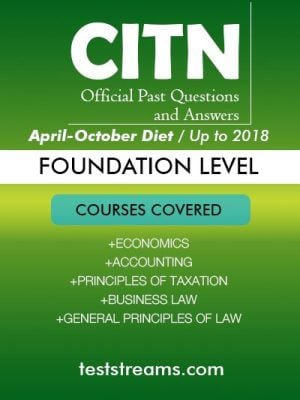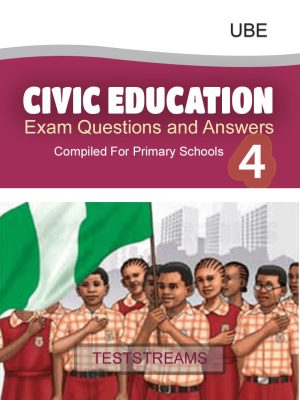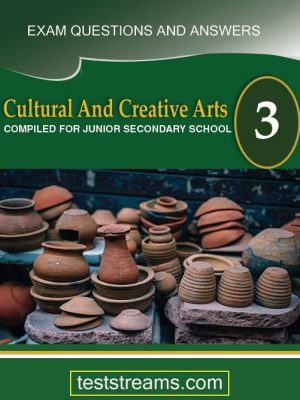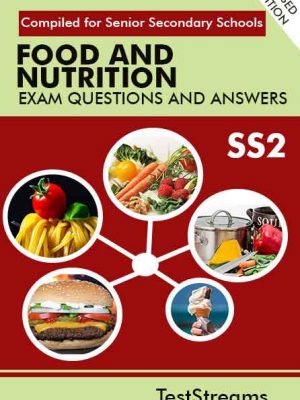NDDC Scholarship Journalism Past Questions And Answers [Free – Download]
Are you a budding wordsmith with a passion for storytelling and a dream of pursuing a career in journalism? The Niger Delta Development Commission (NDDC) Scholarship Program is your gateway to making that dream a reality. We are thrilled to announce an exclusive sale on NDDC Scholarship Journalism Past Questions and Answers! This essential resource will equip you with the tools to excel in the scholarship exam, securing your path to a successful journalism career.
- Empowering Journalism Aspirants:
Journalism plays a critical role in society, providing the public with accurate and unbiased information. Recognizing the significance of journalism in fostering progress and development, the NDDC supports ambitious students like you to pursue higher education in this dynamic field. The NDDC Scholarship Program not only offers financial assistance but also aims to nurture future journalists who will be agents of change in their communities.
- The Value of Journalism Past Questions and Answers:
To excel in any scholarship examination, thorough preparation is essential, and that’s where NDDC Scholarship Journalism Past Questions and Answers come in. This meticulously curated collection provides an insight into previous exam papers, giving you an understanding of the exam structure, question patterns, and areas of focus. By utilizing this resource, you can tailor your preparation effectively and ensure you cover all the essential topics.
What Makes Our NDDC Scholarship Past Questions Stand Out?
- Comprehensive Coverage: Our collection spans multiple years, ensuring that you’re well-prepared for any surprises the exam might throw your way.
- Detailed Answers: Each question is accompanied by a comprehensive answer guide, allowing you to learn from your mistakes and reinforce your knowledge.
- Exam-Relevant Content: Our team of experts has painstakingly compiled the most relevant topics and questions that align with the NDDC Scholarship exam syllabus.
About NDDC Scholarship Test Style and Format (Updated)
NDDC overseas scholarship test was conducted by Cinfores-Ltd, between 2010 and 2015. Since 2016, the tests are now conducted by MEIL (MARG Educational International Limited).
The test usually comprises of 2 sections –
1. General questions which everyone will have to sit, and
2. Discipline-based questions.
For example, candidates in Engineering and Science related disciplines could take a mix of science-based questions like maths, English, physics, and chemistry for part 1, then discipline-specific questions for part 2.
2016 and 2017 tests contained more discipline-specific tests and English language tests as general papers. The test usually lasts between 30 to 60 minutes.
Sample Past Questions for NDDC Scholarship Aptitude Test – for JOURNALISM candidates
1. What is the primary role of a journalist?
a) To report the news
b) To provide opinions on the news
c) To sensationalize the news
d) To report only positive news
Answer: a) To report the news
2. What is objectivity in journalism?
a) Reporting both sides of a story
b) Reporting only one side of a story
c) Reporting opinions as facts
d) Reporting on sensational news
Answer: a) Reporting both sides of a story
3. What is the purpose of investigative journalism?
a) To report breaking news
b) To report on celebrity gossip
c) To expose wrongdoing and hold those in power accountable
d) To report on lifestyle and fashion trends
Answer: c) To expose wrongdoing and hold those in power accountable
4. What is the difference between a journalist and a columnist?
a) A journalist reports facts while a columnist expresses their opinions
b) A journalist focuses on international news while a columnist focuses on local news
c) A journalist reports on politics while a columnist reports on entertainment
d) A journalist works for a newspaper while a columnist works for a magazine
Answer: a) A journalist reports facts while a columnist expresses their opinions
5. What is the meaning of the term “off the record” in journalism?
a) The information provided cannot be reported
b) The information provided can be reported but not attributed to the source
c) The information provided must be reported immediately
d) The information provided must be fact-checked before it can be reported
Answer: b) The information provided can be reported but not attributed to the source
6. What is a byline in journalism?
a) The headline of a news article
b) The opening sentence of a news article
c) The name of the author of a news article
d) The date and time of publication of a news article
Answer: c) The name of the author of a news article
7. Which of the following is NOT a basic principle of journalism?
a) Accuracy
b) Impartiality
c) Sensationalism
d) Transparency
Answer: c) Sensationalism
8. What is the purpose of a lead in a news article?
a) To provide background information
b) To introduce the topic and grab the reader’s attention
c) To offer a personal opinion
d) To summarize the article
Answer: b) To introduce the topic and grab the reader’s attention
9. What is the role of an editor in journalism?
a) To report on news events
b) To write opinion pieces
c) To fact-check and proofread articles
d) To conduct interviews with sources
Answer: c) To fact-check and proofread articles
10. What is a byline in a news article?
a) A headline that summarizes the article
b) The name of the newspaper or publication
c) The date the article was published
d) The name of the author who wrote the article
Answer: d) The name of the author who wrote the article
11. What is the difference between objective and subjective reporting?
a) Objective reporting presents only the facts, while subjective reporting includes the reporter’s opinions.
b) Objective reporting is only done by journalists, while subjective reporting is done by anyone.
c) Objective reporting is always accurate, while subjective reporting is always biased.
d) Objective reporting is only used for hard news stories, while subjective reporting is used for features.
Answer: a) Objective reporting presents only the facts, while subjective reporting includes the reporter’s opinions.
12. What is the primary goal of journalism?
A) To entertain readers
B) To provide unbiased and accurate information to the public
C) To persuade readers to support a certain political agenda
D) To generate revenue for media companies
Answer: b) To provide unbiased and accurate information to the public
13. What is a “beat” in journalism?
A) A type of newspaper layout
B) A type of interview style
C) A specific area of coverage or topic that a journalist is responsible for
D) A type of news story with a specific structure
Answer: c) A specific area of coverage or topic that a journalist is responsible for
14. What is the purpose of the lead (or lede) in a news story?
A) To summarize the entire story in one sentence
B) To provide background information on the topic
C) To introduce the main point or angle of the story
D) To provide a quotation from a source
Answer: c) To introduce the main point or angle of the story
15. What is the “inverted pyramid” in journalism?
A) A type of news story with a specific structure
B) A type of newspaper layout
C) A type of interview style
D) A way of organizing information in a news story, with the most important information at the top and less important information at the bottom
Answer: d) A way of organizing information in a news story, with the most important information at the top and less important information at the bottom
16. What is “objectivity” in journalism?
A) A style of writing that is easy to understand
B) A commitment to reporting only positive news stories
C) A commitment to reporting facts without bias or personal opinion
D) A commitment to including multiple perspectives in every story
Answer: c) A commitment to reporting facts without bias or personal opinion
17. What is “investigative journalism”?
A) A type of news story that focuses on human interest and personal stories
B) A type of news story that covers breaking news events
C) A type of news story that involves in-depth research and exposes wrongdoing or corruption
D) A type of news story that focuses on entertainment and celebrities
Answer: c) A type of news story that involves in-depth research and exposes wrongdoing or corruption
18. What is “yellow journalism”?
A) A type of news story that is overly positive and uncritical
B) A type of news story that uses sensationalism and exaggeration to attract readers
C) A type of news story that is intentionally biased and slanted
D) A type of news story that is poorly researched and inaccurate
Answer: b) A type of news story that uses sensationalism and exaggeration to attract readers
19. What is a “byline” in journalism?
A) The headline of a news story
B) The name of the publication where the story was published
C) The name of the journalist who wrote the story
D) The date on which the story was published
Answer: c) The name of the journalist who wrote the story
20. What is the “AP Stylebook”?
A) A guide to grammar and usage for journalists
B) A directory of media companies and publications
C) A list of ethical guidelines for journalists
D) A style guide for writing news stories, used by many news organizations in the United States
Answer: d) A style guide for writing news stories, used by many news organizations in the United States

Other Related Packs
PRODUCTION ENGINEERING.
PETROLEUM ENGINEERING
ELECTRICAL ENGINEERING
AGRICULTURAL ECONOMICS
CIVIL ENGINEERING
MECHANICAL ENGINEERING
ENVIRONMENTAL SCIENCE
MEDICAL SCIENCE
MANAGEMENT SCIENCE
EDUCATION AND HUMANITIES.
FISHERIES
GEOLOGY.
JOURNALISM
CHEMISTRY
CHEMICAL ENGINEERING.
BIOLOGY
COMPUTER ENGINEERING








